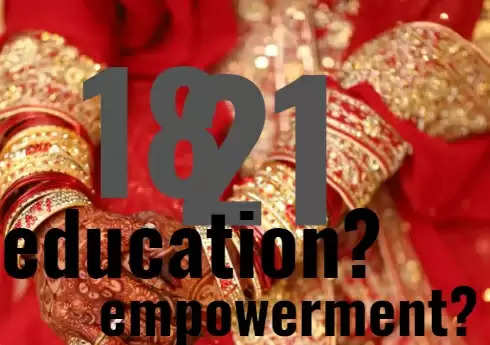360° approach - Educate and Empower Girls to Unlock their Potential
Authored by Seema Gupta, IPE Global
The Prohibition of Child Marriage (Amendment) Bill, 2021 was introduced in the Parliament by the Union Minister, WCD, earlier this month and referred by her to a standing committee. The bill seeks to bring the legal age for girl’s marriage at par with men's marriage at 21 years, up from the current 18 years, overriding all existing laws related to marriage. Coined as a "decisive step" in the country’s history, the Bill seems well-intentioned. Nonetheless, its nuances and supportive ecosystems are being questioned by many stakeholders, including champions of women’s rights, CSOs, and youth champions, to name a few.
23% of girls in India continue to get married before the age of 18, as per the National Family Health Survey-5, 2021. The disaggregated data reflects the disparities across districts. For example, in the Godda district of Jharkhand, 48% of girls were married before the age of 18, while in the South Goa district, only 3.9% were married by then.
The age of marriage of girls is not governed by the law in India. It is rooted in socio-cultural and economic factors, directly connected to their access to nutrition, education, skills, and income-generating opportunities. Deep-seeded gender discrimination makes some parents consider girls as liabilities. Girls also get married early as parents do not see any alternate pathways to secure their future. Evidence shows that adolescent girls with employability skills and prospects of employment are 23% less likely to marry early, yet majority of the girls do not complete higher secondary school (Retention rate - 40.4% girls in higher secondary school vs 87.5% in primary school)
To empower girls to make informed decisions about their lives and negotiate their age of marriage and sexual and reproductive choices without judgment, it is critical to nourish, nurture, and give them enabling opportunities. It is imperative to create an ecosystem that prioritizes their nutritious meals, ensures continuity in education, links them (both in-school and out-of-school) with the right skills, vocational training and income generating opportunities, and gives them equitable access to information regarding their own bodies and rights.
There have been innovative models that have addressed these with a human centered design approach, showcasing scalable models. One such model is "Udaan", an initiative of IPE Global with the Government of Rajasthan, successful in reducing early marriage amongst girls and adolescent pregnancy through a 360-degree approach — keeping girls in secondary schools, strengthening knowledge, attitudes, and practices on sexual and reproductive health, expanding contraception mix and choice. Their "Manzil" initiative prioritizes skills and jobs for adolescent girls, facilitating a 3-way match between girls' aspirations, skills, and job opportunities.
Changing the narrative around a girl’s marriage needs to include youth voices, champions, teachers, gram panchayats, enforcement agencies, child protection committees, and other existing institutions. While the government’s will towards gender equity and women's empowerment is evident and appreciated, the Centre for Knowledge and Development firmly believes that a supportive ecosystem that educates and empowers girls, is key towards achieving any lasting change in their lives.
The author is Advisor, IPE Global, Centre for Knowledge and Development. Views expressed are personal and do not necessarily reflect the views of the organization.
To join us on Facebook Click Here and Subscribe to UdaipurTimes Broadcast channels on GoogleNews | Telegram | Signal



